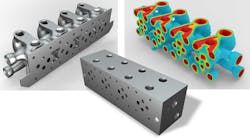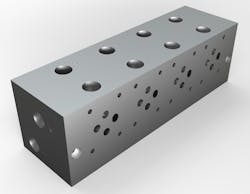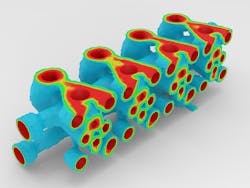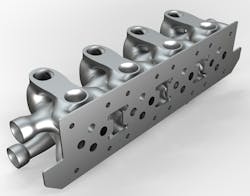Thanks to groundbreaking concepts such as generative design and topology optimization software, additive manufacturing is liberating design engineers in ways that were unfathomable even a decade ago. Suddenly, lightweighting is no longer the challenge it once was. Designers can develop stronger, more durable products that require less material, energy and time to manufacture. Design cycles are faster and more efficient, as is the production process, resulting in lower costs for all involved.
Granted, some of these newfound capabilities extend to traditional forms of manufacturing like casting and machining, but it’s additive manufacturing with its virtually unlimited design freedom that offers the greatest potential. The takeaway? The industry overall is on the cusp of a renaissance, one that promises to change everything about the way we manufacture a whole host of products, regardless of the method or process used to do so.
Breaking With Tradition
Embracing this change, however, will require us to discard the design and manufacturing status quo. Consider a hydraulic manifold, a component common in the industrial equipment sector as well as the aerospace and defense industry. The middleman between pumps and actuators, manifolds distribute fluids, regulate flow and control pressure in practically all hydraulic systems, and are critical to the functioning of everything from trains and tractors to aircraft and missile systems. Hydraulic manifolds are, quite simply, everywhere.
Despite their vital role in these and other electromechanical equipment, hydraulic manifolds have long been machined from solid blocks of metal and are therefore known for their heavy, blocky construction. But when used in conjunction with a portfolio of software applications able to unlock its full capabilities, additive manufacturing is about to change that century-old paradigm, beginning with the materials.
Unlike traditional methods, additive manufacturing allows engineers to manipulate metals and polymers at the microscopic level. Doing so, however, requires access to an in-silico simulated environment. This virtual materials lab allows users to not only analyze these materials at the molecular level but then certify them for additive manufacturing, an important step. Perhaps most intriguing of all is the ability to develop entirely new metal alloys, all virtually—no furnace required.
Stepping Through the Workflow
Certified materials at the ready, engineers can then begin to generatively design manifolds to meet specific criteria. Blocky, legacy construction gives way to lightweight, compact structures. Flow-driven generative design eliminates concerns over pressure drop or fluid turbulence. Topology optimization reduces weight and material usage even further while enhancing mechanical characteristics. At each step of the process, engineers immediately understand what works and what doesn’t, without the need for physical prototypes, expensive tooling and the lengthy lead times for each.
That visibility carries through to the additive build process. Designers can now determine in advance that finished part quality will meet their quality standards, and that there won’t be any warpage, shrinkage or residual stresses. They can create virtual machines, develop and test laser parameters, generate support structures, and analyze how to orient the part or parts within the build chamber for the most effective printing. When ready, they can then run a process simulation to understand how the part will behave during the actual printing process, all without wasting any expensive material or precious machine time.
These abilities assure the designer that the first manifold will be a good manifold. And once the part leaves the build chamber, simulation of any secondary processes (like removal from the build plate) is also possible. Manufacturing engineers are able to analyze what will happen during heat treatment and machining, then proactively compensate for any distortion. They can also evaluate products in the field, estimating variables such as fatigue life, failure modes and durability and then adjusting the part design or build parameters as necessary to maximize product strength and performance.
A Bird’s Eye View
All of this is achievable in a digital environment, well before the laser is turned on or the first bit of metal powder is spread across the build plate. Here again, access to a portfolio of additive manufacturing-oriented software applications serves to streamline the production process.
Shop floor management gains visibility to machine utilization, maintenance status and material availability. They are alerted to potential build problems, allowing them to take proactive remedies before part quality can be negatively affected. And operational factors such as laser activity and build chamber gases are constantly monitored and recorded for traceability purposes. With the right software in place, additive manufacturing is no longer a black box affair.
Colin Swearingen is a process consultant for the modeling and simulation industry business at Dassault Systèmes.



